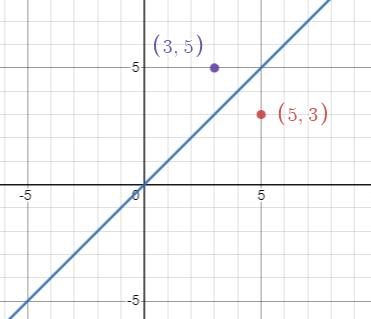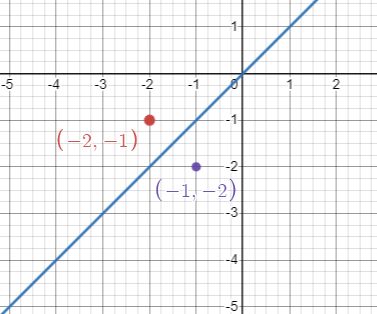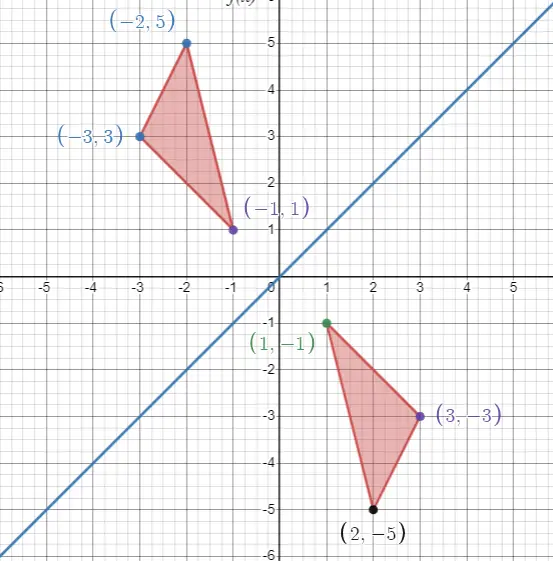The y=x reflection rule allows us to find the reflection of a point about the diagonal line y=x. The reflection rule simply states that the reflection of the point (A,B) about the line y=x is (B,A).
Reflection about the Line Y=X:
In order to find the reflection of a point about the line y=x one must simply interchange the positions of the x and y co-ordinates. That is,
(x,y) ⟿ (y,x)
Examples:
1) A point in the first quadrant stays in the first quadrant on reflection about the line y=x. For example, the point (3,5) goes to the point (5,3).
(3,5) ⟿ (5,3)

2) A point in the second quadrant goes to the fourth quadrant on reflection about the line. For example, (-1,4) goes to (4,-1).
(-1,4) ⟿ (4,-1)
Conversely, a point lying in the fourth quadrant goes back to the second quadrant upon reflection. For example, (2,-5) goes to (-5,2).
(2,-5) ⟿ (-5,2)

3) A point in the third quadrant stays in the third quadrant on reflection about the line y=x. For example, the point (-1,-2) goes to the point (-2,-1).
(-1,-2) ⟿ (-2,-1)

Reflecting a Triangle about the Line Y=x:
In order to reflect a triangle about the line y=x we:
- First label and find the co-ordinates of the vertices of the original triangle.
- Reflect each of the vertices of the triangle via the reflection rule.
- Join the new points obtained in order to find the new triangle.
For example, upon reflecting a triangle with vertices A(-1,1), B(-3,3) and C(-2,5) we obtain the new triangle as shown below.
The vertices of the reflected triangle are, D(1,-1), E(3,-3) and F(2,-5).

Reflecting a Function About the Line Y=X:
Suppose that we are given a function y = f(x). We perform the following procedure, in order to find the reflection of the function about the line.
- Interchange the roles of x and y in the equation.
- We obtain the new equation x = f(y).
- Solve for y in the new equation to get the reflected function g(x)
For example, let y = x3 +4 be the given function.
Interchanging the roles of x and y we get,
x = y3 +4
y3 = x – 4
y = (x – 4)1/3
Therefore g(x) = (x – 4)1/3 is the new function obtained upon reflection.
